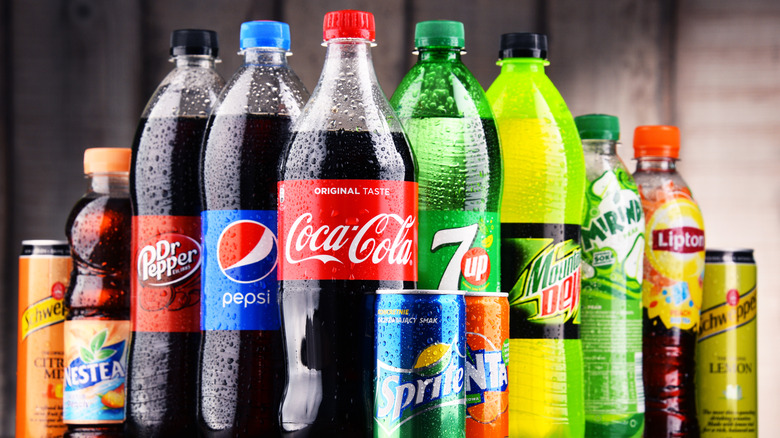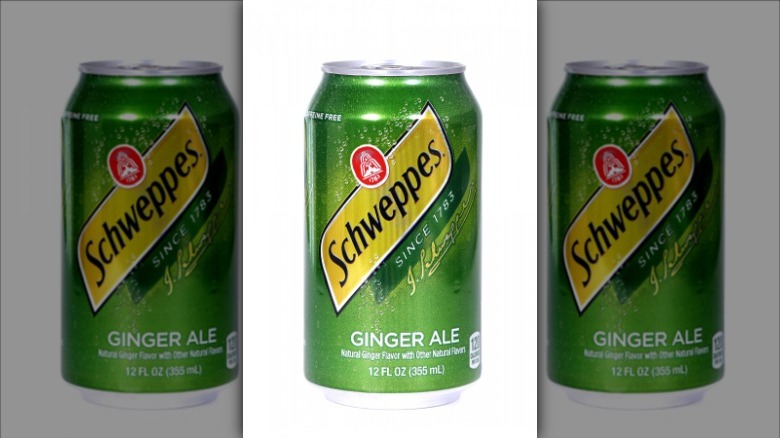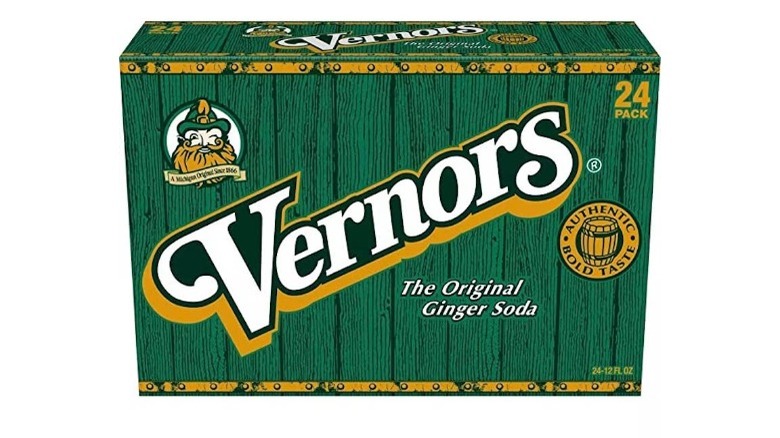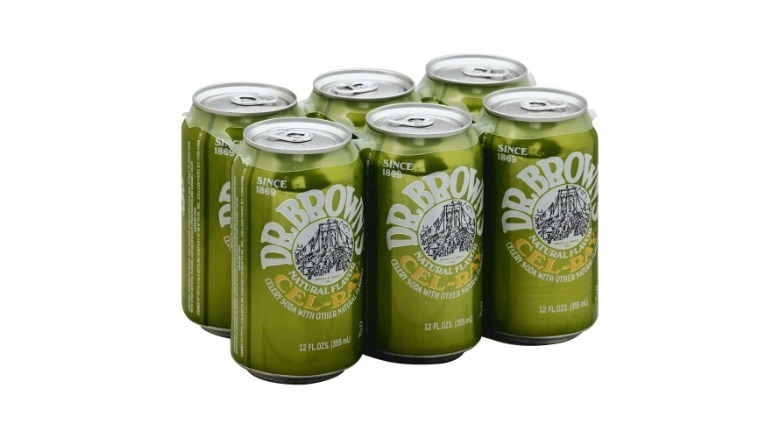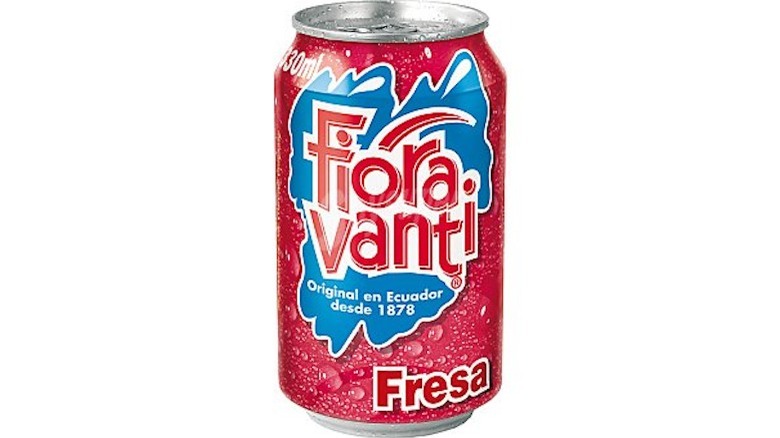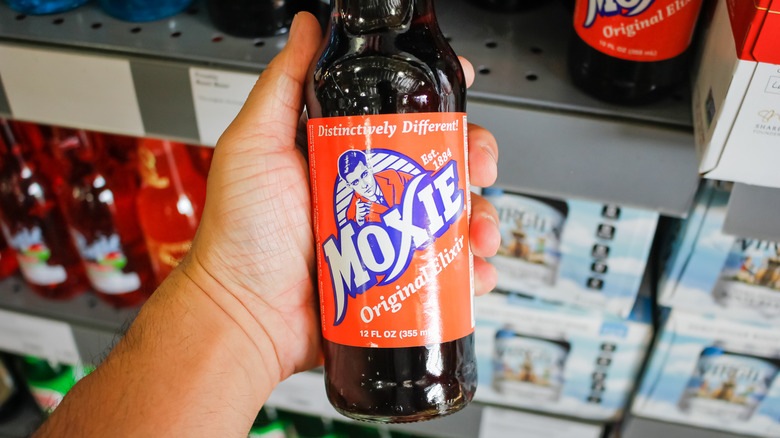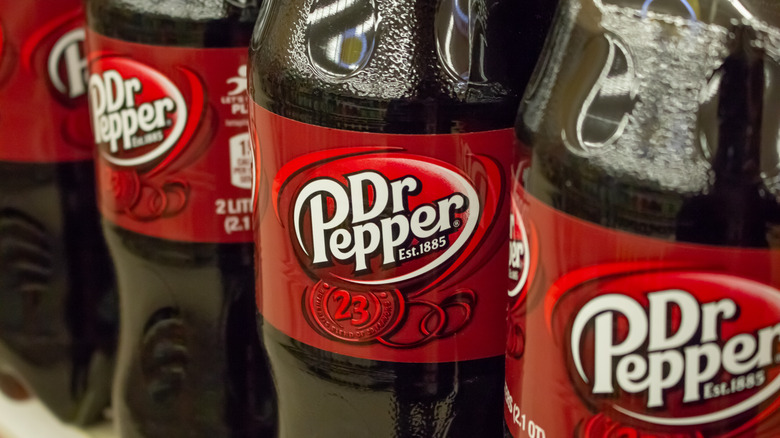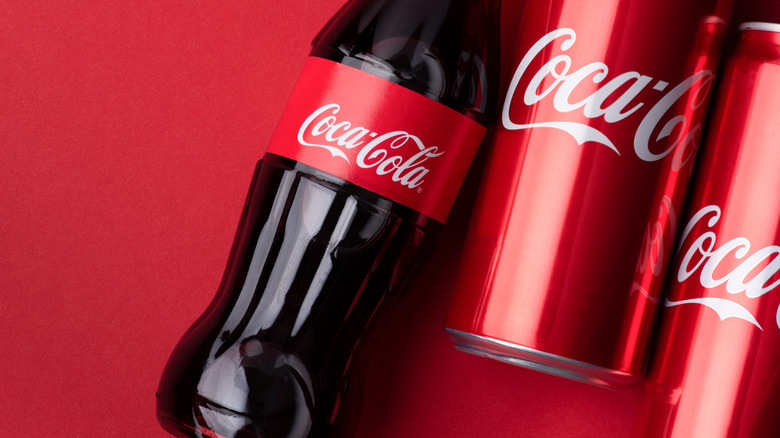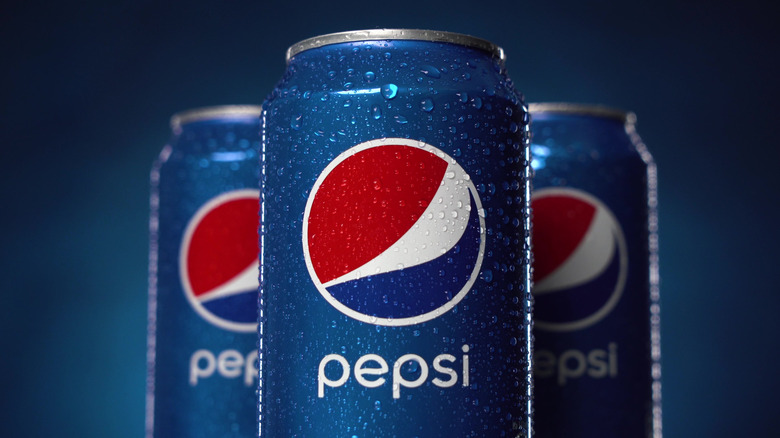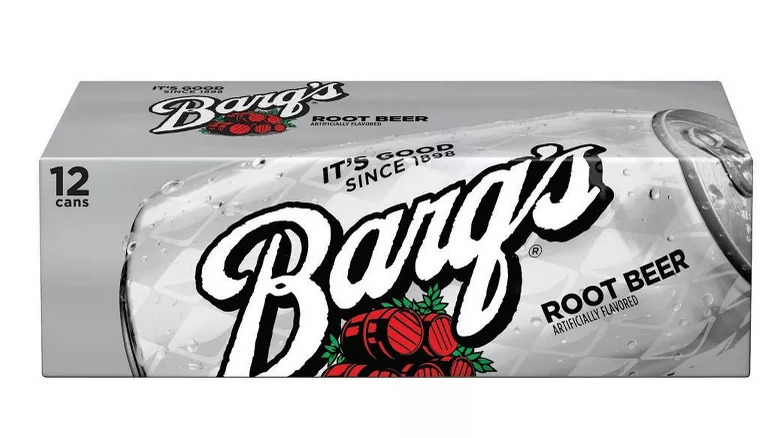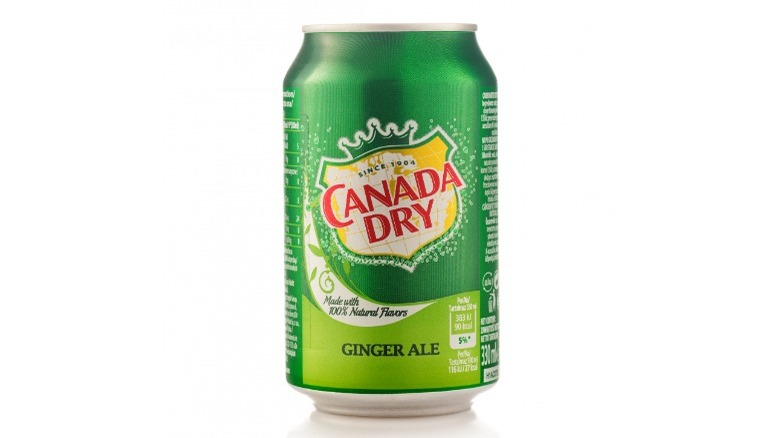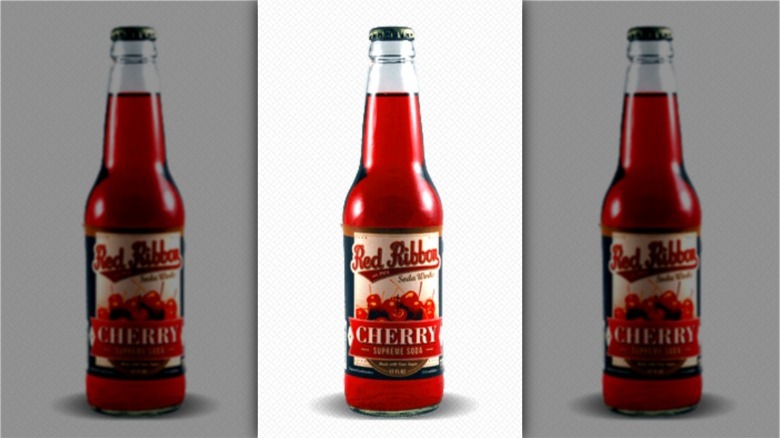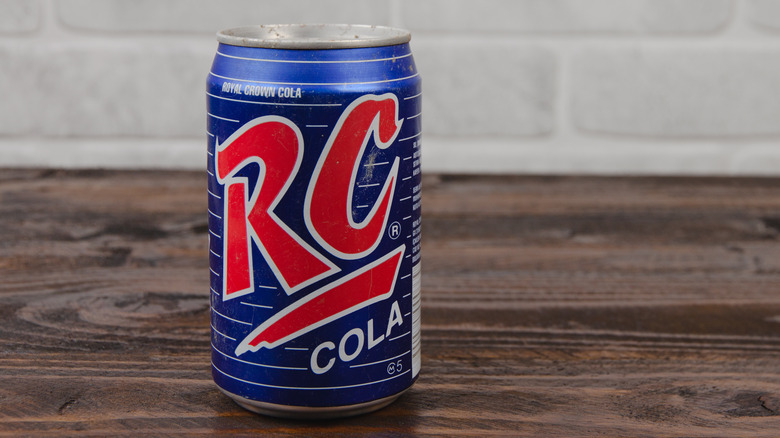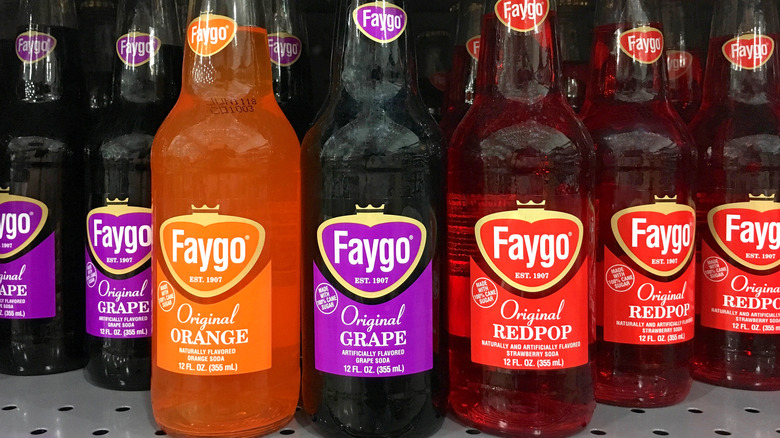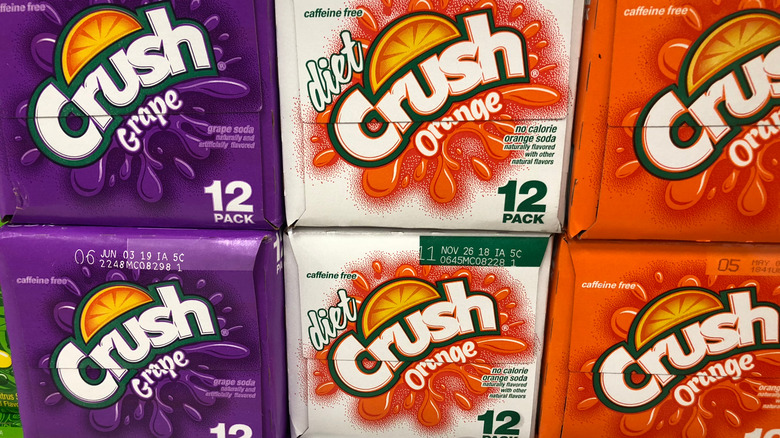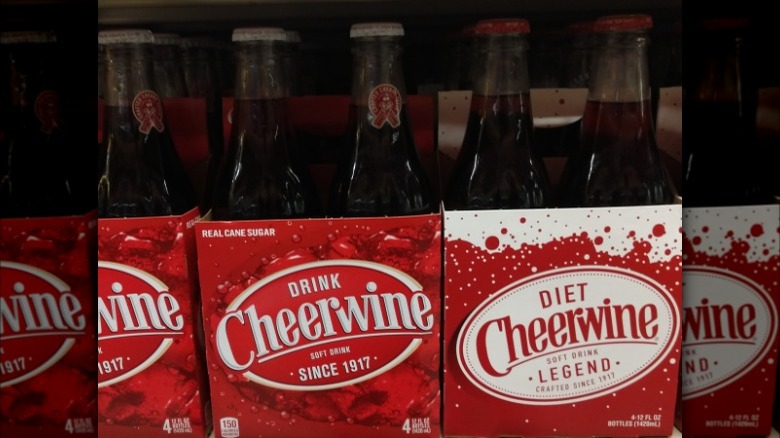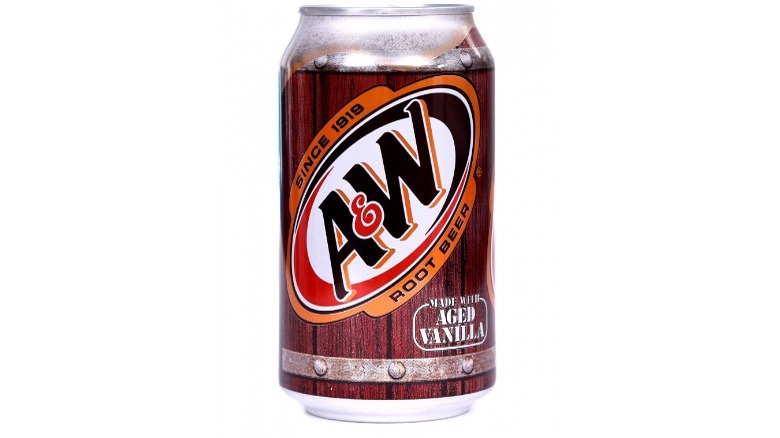16 Oldest Soda Brands That Are Still On The Market
Soda is a big part of our average life. It is hard to imagine a time without these sweet carbonated beverages. That being said, carbonated drinks did not show up until the 17th century, and then they were taken from natural sources (via Britannica). It was not until the 1800s that experiments began to make a manufactured carbonated but non-alcoholic drink. These experiments changed the way we drink for the coming centuries.
Initially, many sodas — or pops, as they are called in some regions — were thought to have medicinal purposes, with many early soda brands such as Schweppes and Coca-Cola claiming health benefits from their drinks. While these have primarily turned out to be false, ginger ale can still be used today for an upset stomach, so they were not entirely wrong.
Now that soda has existed for over 200 years, many companies have come and gone. For example, the original root beer, Hire's, has completely disappeared from shelves. While we can not get this drink anymore, you may be wondering what sodas from the early days are still on the market. So we have compiled a list of classic brands to give you a taste of history.
Schweppes (1783)
The oldest soda brand still on the market today is none other than Schweppes. Schweppes was founded initially in 1783 when Jacob Schweppes created carbonated mineral water (via Coca-Cola). The product's notoriety grew, and Schweppes began selling in Geneva and England. This early soda was not initially sold as a sugary treat like it is today but was instead used as medicine to treat illnesses such as upset stomachs. By the 1870s, Schweppes began producing ginger ale and tonic water with quinine in it (via Fairway Market).
In 1863, King William IV gave Schweppes a Royal Warrant of Appointment, further pushing the brand into the public eye (via Schweppes).
The brand was a huge success due in no small part to an aggressive advertising schedule. While Schweppes is still on the market today, there was a brief time when the product was unavailable. During World War II, Schweppes was taken off the market in England. However, that did not stop their advertising campaign. Finally, the drink returned to the shelves, and their cunning marketers began to create their own terminology, including "Schweppervescence."
Schweppes is still going strong today, produced by Coca-Cola in some parts of the world, and is owned in the United States by one of the other oldest soda brands, Dr Pepper (via Keurig Dr Pepper).
Vernors Ginger Ale (1866)
There is some speculation about the exact creation of Vernors Ginger Ale. According to the Detroit Historical Society, the drink was invented by pharmacist James Vernor. One story says Vernor was working on creating different combinations of herbs to help settle the stomach when he went off to fight in the Civil War in 1862. When he returned, he discovered that the beverage, which he had left in a barrel, had turned into a delicious drink. However, the family has disputed this story and said the formula was not created until after his return.
Either way, in 1866, James Vernor opened his own pharmacy and soda fountain and began serving his ginger ale. Due to high demand, Vernor began selling to other soda fountains. However, Vernor was exacting on the production of his drink and made sure that every part of the beverage was mixed to his satisfaction. Even this was not enough though, and the family began opening factories to distribute the beverage on a larger scale.
The Vernor family owned the company until the 1960s when it was sold to an investment group. Today it is owned by Keurig Dr Pepper.
Dr. Brown's (1869)
The exact creation of Dr. Brown's, particularly their famous Cream Soda and Cel-Ray, is one shrouded in mystery. Celery-based soda may seem like an odd flavor, but as The Jewish Star notes, in the mid-1800s, celery was considered a "superfood" and enjoyed immense popularity. It was thought to do anything from being a relaxant to curing headaches.
Legend has it that in 1869 a New York physician, "Dr. Brown," created a celery tonic that was a hit with children. The recipe was popular, and soon cream soda (via the Los Angeles Times) and sarsaparilla (ginger ale) were added to the line-up (via The Jewish Star).
That being said, there is no proof of a Dr. Brown having ever existed. Harry Gold, Dr. Brown's marketing director, told the Los Angeles Times that there are no records of the doctor and the story is treated like a biblical myth. This is oddly appropriate for the company, though, which gained much of its popularity through the Jewish community. The drink was almost exclusively sold for many years in New York Jewish delis, as well as sold door-to-door in Jewish neighborhoods. Cel-ray, in particular, earned the title of "Jewish Champagne" (via The Jewish Star).
Today the drink can still be found in delis and in specific markets around the country.
Fioravanti (1878)
Fioravanti, or simply "Fiora," is an Ecuadorian company said to have been founded in 1878 (via Delicious Sparkling Temperance Drinks). However, the first documented mention of the brand comes from 1881. Either way, this places it squarely as the fourth-oldest soda brand still being made today and one of the oldest in the world.
Italian immigrant Juan F. Fioravanti founded the company making fruit-flavored sodas. His first bottling facility burned in a fire in 1901. While this could have spelled the end for Fioravanti, he rebuilt, and in 1912 he purchased a larger plant. At this point, the brand was still being sold locally. However, Fioravanti sold the company. In 1940 the company was sold again, this time to José Peré Abenoza and his family, who ran Fioravanti for 50 years, taking distribution nationally. In 1991, the company was sold a final time to a conglomerate that was owned by Coca-Cola. The company now has bottling plants in Spain.
Moxie (1884)
It is not every day that a food brand spawns its own terminology in the lexicon, but that is exactly what the soda brand Moxie did. Moxie was initially created as a medicine in 1878 known as "Moxie Nerve Food" (via the Lowell Sun). Its creator, Augustine Thompson claimed the medicine contained a rare South American plant that he refused to name but is now known to be gentian root (via Useless Etymology). Thompson claimed the name came from a friend, Lieutenant Moxie, who found the plant. This makes a truly marketable story. However, the name was likely taken from the Native American word "moxie," which means "dark water," and was used in the names of bodies of water near where Thompson was born. He claimed the syrup could cure pretty much anything, including paralysis and insomnia.
While the syrup existed in 1878, it was not until 1884 that the concoction was mixed with carbonated water to create the Moxie soft drink. The Lowell Sun reports that the drink became a popular soda in New England but never gained the same notoriety as brands such as Coca-Cola. However, "moxie" went on to be a term used to describe someone with a lot of determination or nerve (via Drink Moxie), a reflection of the drink's original use.
Dr Pepper (1885)
As one of the oldest soda brands — and the oldest major soda brand in the United States (via Dr Pepper Museum) — Dr Pepper sure has made a name for itself, despite no one knowing exactly where its name came from.
Dr Pepper was created in 1885 by pharmacist Charles Alderton in Waco, Texas. At the time, Alderton was working at Morrison's Old Corner Drug Store, and when he was not actively working, he spent his time at the connected soda fountain. He loved how the fountain smelled and set out on his greatest pharmaceutical endeavor: mixing a soda that tasted like the store smelled. Using his research skills, he kept a written log of all the combinations he tried until he found the right one.
Alderton had store owner Wade Morrison try it. Both enjoyed the flavor, and Morrison began to offer it to customers. Originally called "Waco" after the place of origin, Morison is said to have renamed it "Dr Pepper." The drink became so popular they could no longer keep up with production. Morrison wanted to expand, but Alderton was more interested in the pharmacy, so he sold the rights of the formula to Morrison and a beverage chemist named Robert Lazenby (via Waco Masonic Lodge and Dr Pepper History Museum).
The two introduced Dr Pepper at the 1904 World's Fair and kicked off a soda empire. Over the years, Dr Pepper's unique flavor has made it an icon, with fans such as writer John Green devoted to the unparalleled taste.
Coca-Cola (1886)
Coca-Cola is one of the best-known soda brands today and has become a large company owning even more drinks under it. But as one of the oldest soda brands still on the market today, it came from humble beginnings.
The drink was created by Dr. John Stith Pemberton, a pharmacist in Atlanta, Georgia (via Coca-Cola Company). Pemberton created syrup derived from cocaine in the coca leaf and the caffeine in the Kola nut (via Britannica). This was initially to develop a drink to overcome his morphine addiction (via Business Insider). However, in a bid to monetize the drink in 1886, Pemberton took his syrup to the nearby Jacobs' Pharmacy, where they mixed the syrup with carbonated water and sold it at the soda fountain. It was a hit, and soon Pemberton's bookkeeper Frank M Robinson decided alliteration would make for good marketing and came up with the trademark "Coca-Cola." Although the company stopped using cocaine in its syrup in 1903, the font showcased today on the package is based on Robinson's script.
Sadly, Pemberton died just two years later after a battle with stomach cancer, during which he sold off his shares to Asa G Candler. After Pemberton's death, Candler bought all the other rights to the company and, in 10 years, raised production from 9000 gallons of syrup to 370,877 gallons, setting it up to be the company we know today.
Pepsi-Cola (1893)
After Coca-Cola, the next big giant, which appeared just a few years later, is Pepsi-Cola. Pepsi-Cola was founded by pharmacist Caleb Bradham in 1893. When he first created it, he called it "Brad's Drink," which was flavored with kola nuts, nutmeg, caramel, and lemon oil (via Pepsi). The goal was to duplicate Coca-Cola's success by introducing his own kola soda (via Britannica).
In 1898 Bradham started selling it at his pharmacy and gave it the snappy new name of Pepsi-Cola. By 1903, the popularity of the drink had grown, and Bradham had incorporated and begun selling at other pharmacies throughout North Carolina. The company continued to grow until World War I. After many reorganizations, the controlling interest in the company was purchased by Charles G Guth in 1931, who worked to rebuild the brand, including having a chemist alter the formula. Eventually, he lost his controlling interest, and in 1950 a former vice president for Coca-Cola, Alfred Steele, took over as chief executive officer. He pushed lots of advertisements and grew the company's earnings substantially, finally achieving Bradham's goal and making it a main competitor of Coca-Cola.
Barq's (1898)
Barq's was founded by Edward Charles Edmond Barq when Barq bought a bottling company in 1897 (via Barq's and the Southern Quarterly). Barq began mixing different formulas for drinks, and in 1898 Barq's Root Beer came on the market. His root beer was known for its unusual flavor and "sharp" taste. The company experimented with different flavor profiles, including fruit options and a drink called Barq's Sr., which had its own unusual flavor. The company continued to do well, and while prohibition was hard for the alcohol industry, it led to a sharp rise in root beer sales.
In the 1930's Barq's moved to a larger plant, and by the 1950s there were over 200 Barq's plants in the United States. Its popularity continued to grow nationally, and in 1995, Coca-Cola purchased the company. Still best known for its root beer, Barq's also makes a cream soda and a red cream soda.
Canada Dry (1904)
Canada Dry was founded in 1904 by John J. McLaughlin, who owned a sparkling water plant in, unsurprisingly, Canada (via Canada Dry). McLaughlin's first soda company made simply carbonated water used as a mixer at soda fountains (via Hagley Digital Archives). At that time, the popularity of ginger ale began to rise, specifically ginger ales that were mellow in flavor and sweet. So McLaughlin developed a "pale" or lighter-flavored ginger ale for the market.
In 1919 McLaughlin was shipping his product to New York City, where it did so well that he opened a production plant in the city. McLaughlin sold the company in 1923. The new owners incorporated it, and soon sales were booming. This was partially due to the popularity of using ginger ale as a mixer during American Prohibition to hide the taste of homemade alcohol. The company today is owned by Keurig Dr Pepper and continues to make the soft and sweet-tasting Canada Dry Ginger Ale.
Red Ribbon (1904)
Red Ribbon came onto the scene the same year as Canada Dry, and while it does not have the same notoriety as the larger brand, it is still alive and on the market today. Red Ribbon soda was founded as part of the Natrona Bottling Works by Ed Welsh (via Natrona Bottling). Their first soda was the Cherry Supreme Soda, a cherry-flavored soda (via Natrona Bottling). After that, the company expanded its arsenal to include a whole range of flavors. In 1939, the company was purchased by the Bowser family, who restructured Natrona, allowing them to produce more without sacrificing what they considered to be true quality. In this vein, Red Ribbon sodas are made with 100% cane sugar, not corn syrup. They also still utilize their more than 70-year-old equipment to create their "pinpoint carbonation" using dry ice (via Natrona Bottling).
After Paul Bowser died, the company shut its doors temporarily until it was sold to Vito Gerasole, who kept the company going. Today, Red Ribbon is still available regionally. In addition to its own line of unique flavors, Red Ribbon also acquired the recipe for the now-discontinued regional hit Tom Tucker Mint Ginger Ale (via Heinz History Center). So if you can find Red Ribbon, you can now try a taste of two different regional sodas.
RC Cola (1905)
RC Cola may not be as popular as its other cola brands, but despite its competition, the company has endured and is still on the market. The first RC Cola products were sold in 1905 when pharmacist Claud A Hatcher created his own line of sodas called "Royal Crown" and sold them at his family's grocery store (via RC Cola Winchester). The line included a cola-based soda, "Chero-Cola," as well as root beer and strawberry.
Initially, Hatcher's Chero-Cola Co. was bottled out of his business, but as his brand grew he needed more space. By 1928, Hatcher created the company Nehi which sold fruit-flavored soda (via RC Cola Winchester and Clare County Cleaver). The company was doing well but began to take on debt. After Hatcher's death, Vice President H.R. Mott took over and reorganized, streamlining production and reformulating Royal Crown. Mott was successful on all fronts, and the company was able to come out of debt within a year. Plus, the new formulas were a success, being marketed under the updated name Royal Crown Cola, which became the official name of the company. Over the years, this became shortened to just RC Cola. Both RC Cola branded drinks and Nehi are still available today. Keurig Dr Pepper now owns the brand.
Faygo (1907)
Faygo is an American dream success story. The company was founded by Russian immigrant brothers Ben and Perry Feigenson. Initially bakers, the brothers began bottling beer as well as soda water. In their free time, they began to create new flavors inspired by the frostings used in their baked goods (via Detroit Historical Society).
The brothers started their business selling from a horse-drawn carriage. The first flavors were fruit punch, strawberry, and grape. By 1912, though, they were able to upgrade to a GMC truck (via Faygo). The company was named after the brothers, called Feigenson Brothers Bottling Works, but in 1921 they decided to shorten it to simply Faygo.
In the 1940s, the brothers' sons took over. In the 1950s, Faygo was still only sold regionally. In order to expand the business, however, it had to solve an important problem: the soda would go flat fairly quickly. The company solved the issue with the help of some chemists and a new filtration system, and Faygo grew in national popularity. In 1985 the company was sold from the original family to National Beverage Company, which still owns it today.
Crush (1906/1916)
Orange Crush is a fruity carbonated beverage hit that holds its place in pop culture and our taste buds alike. What you might not realize is that the original formula of this soda dates back to 1906 (via Crush Soda). The company still claims to be the "original orange soda," but the drink as it was initially created is not the one on the market today. J.M. Tompson created the formula, but according to Print Magazine and Crush Soda, Neil C. Ward altered the recipe and then partnered with Clayton J. Howell to create "Ward's Orange Crush." The "crush" was used to indicate the process that extracted the orange oils used in the formula. In 1916 they premiered their Orange Crush Company.
The drink gained wide success, and in 1933 it was the official orange drink of the Chicago World's Fair (via Crush Canada). While orange was the first flavor, it was not the last. By the 1960s, grape, pineapple, and cherry crush had been added, in addition to lemon. Now there are even more flavors, but Orange Crush will always be first in our hearts. Keurig Dr Pepper now owns the brand.
Cheerwine (1917)
Cheerwine was founded in Salisbury, North Carolina, by L.D. Peeler in 1917 (via Cheerwine). Peeler dreamed of starting his own soft drink company after a previous venture with a company called Mint-Cola Bottling went bankrupt (via North Carolina History). On the hunt for a unique flavor that did not require as much sugar since there was a sugar shortage, Peeler purchased a wild cherry flavor from a St. Louis businessman.
Peeler used this as a basis to create Cheerwine. The name referred to the deep red color of the cherry drink and the "cheer" it would put in a person's day.
Through the 1920s, the company continued to grow, but in 1931 L.D. Peeler died. That was not the end of Cheerwine, though. His son took over and successfully kept the company going through the Great Depression. The family must really know what they are doing, because multiple generations later, Cheerwine remains one of the few classic bottling companies run by the same family and can still be found regionally today.
A&W Root Beer (1919)
A&W Root Beer was not the first on the market, but it is one of the oldest still available. Back in 1919, Roy W. Allen started a humble roadside root beer stand in Lodi, California (via A&W Restaurants). The shrewd businessman launched on a hot night celebrating the homecoming of World War I. Shortly after, in 1922, Allen partnered with Frank Wright and opened two A&W root beer stands, named in honor of their last names. In 1924, Allen bought Wright out of his share of the brand but kept the name (via Thought Co.). In the 1950s, there were over 400 locations of A&W Root Beer stands. Finally, Allen decided to cash in and retired, selling to what became the A&W Root Beer Co.
While their root beer could be found on tap in their restaurants, it took until 1971 for the company to offer the beverage in bottles or cans. But the brand took off, and according to Thought Co. is one of the top-selling root beer brands in the world. Keurig Dr Pepper now owns the brand.
